I’ll bet most of you have never heard of National History Day. No, it’s not the same as the Congressional proclamations for National Donut Day, National Bobblehead Day, or even National Fruitcake Toss Day (these all fall in January so make sure you mark your calendars for next year).
National History Day (NHD) is a non-profit organization dedicated to offering year-long academic programs for middle- and high-school students (6th to 12th graders). The largest NHD program is the National History Day Contest which encourages students to conduct historical research, interpretation, and creative expression on a topic of their choice. Each year, a theme is chosen, and the students pick their topic based on the theme, which is then presented as either a paper, exhibit, performance, documentary, or website. Think of this like the Science Fair projects but only on history (I received an “Honorable Mention” on mine). The student will enter their project at the local and affiliate levels, with the top projects advancing to the National Contest. NHD teaches critical thinking, writing, and research skills and boosts the students’ performance across all subjects. Past winners include Guy Fieri, Food Network’s television personality.
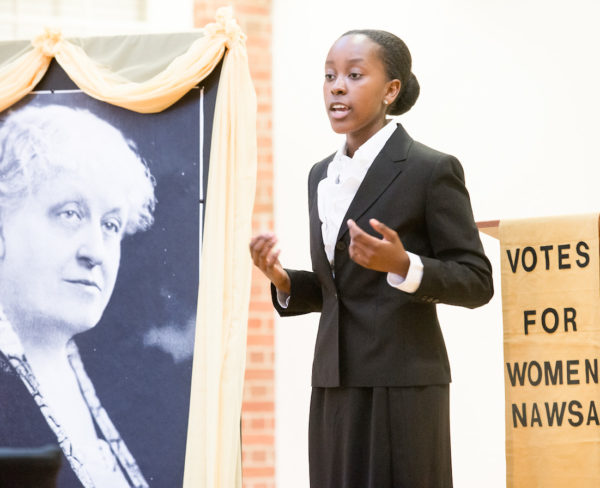
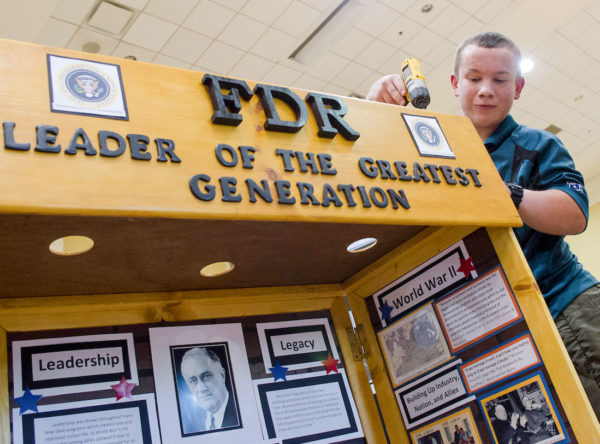

Did You Know?
Did you know that the greatest compliment I have been given in regard to writing the walking tour books was from one of my members in the Southeast Business Forums which I founded and ran in Nashville?
This gentleman had a daughter in high school who hated history. She refused to open or read any book having to do with history (you can imagine what that did to her GPA). He bought one of my French Revolution books, handed it to her, and said, “Just flip through this.”
He told me that she sat down with the book and read it from cover to cover in one sitting. When his daughter was finished, she came to him and requested that he buy the other books for her to read. The end result, or so he told me, was that his daughter developed a love for history, started bringing home A’s in her history class, and was considering becoming a history major in college.
That’s what keeps me going.
The theme for the 2019-2020 National History Day Contest is “Breaking Barriers in History.”
So, how do I know about NHD, its current theme, and the fact that some television celebrity who likes hot food is a past winner? I received an e-mail from Tristan H. asking me if I would agree to be interviewed in conjunction with the project she is working on for the 2020 National History Day Contest. Tristan informed me that her project was going to highlight the exploits of the female spies in the Special Operations Executive (SOE) during World War II. Tristan is in the 7th-grade in Southern California and frankly, after receiving four or five e-mails from her, I don’t think I’ve ever run across a 7th-grader who writes as well as Tristan.
I suggested she put together a list of questions and e-mail them to me. I would respond and then, if she wanted to follow-up with a discussion over the phone, I would make myself available.
The purpose of this blog is to make you all aware of the NHD as well as share Tristan’s questions (and my answers) with you.
Tristan’s Questions
How did the women acting as spies break gender barriers at the time?
Probably the biggest barrier they broke was by being assigned to what I would consider the “front-line.” Although their assignments were non-combat related (i.e., typically as radio operators), if they were caught, the penalty would certainly have been terrible torture (Odette Sansom is a good example) and in many cases, execution at the hands of the Gestapo, SS, or the Milice (e.g., Violette Szabo). However, some women did participate in actual combat against the Germans (read Nancy Wake’s story, The White Mouse here). All qualified SOE agents, men and women, were trained in hand-to-hand combat as well as how to handle weapons and sabotage materials. So, this tells me that women agents were expected to be ready for combat if it came their way (Women Agents of the SOE, read here).
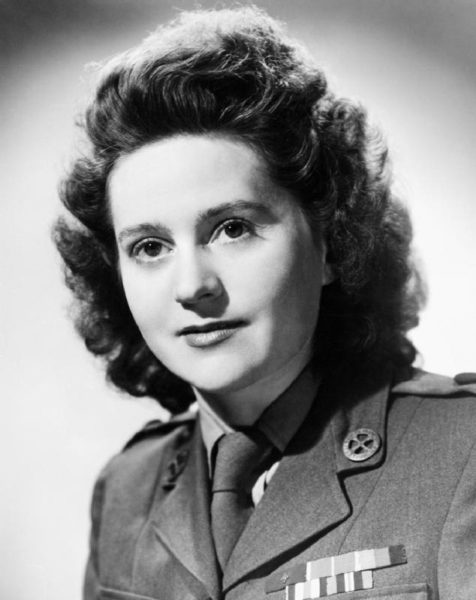
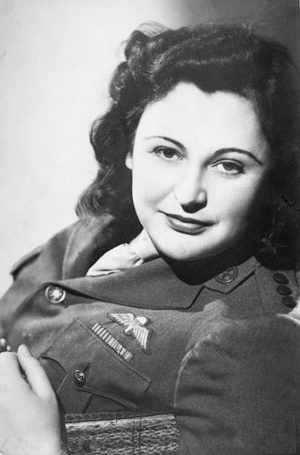
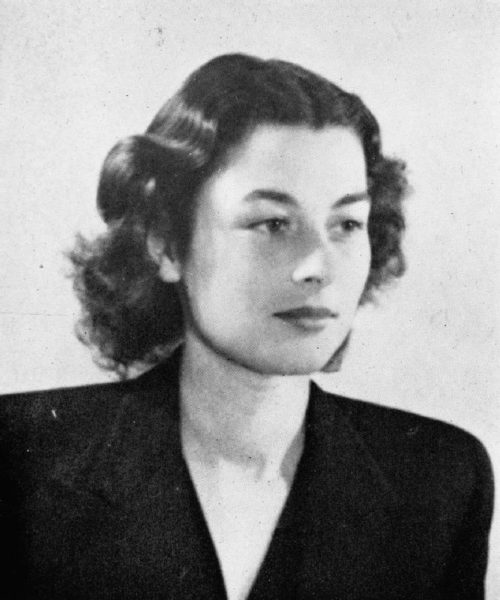
From my limited research on all of this, these women were considered on equal standing as their male agent counterparts. This was not true of other military groups, American or British. When Nancy Wake parachuted into France in early 1944 to join the Maquis, she was subjected to discrimination by certain Maquis leaders. It didn’t take too long before Wake gained their respect and, in the end, she was running Maquis groups consisting of more than a thousand men including those Maquis leaders who reported to her. Women like Andrée de Jongh (the Comet Line), Marie-Madeline Fourcade (read Noah’s Ark here), and Pearl Witherington (read Pearl’s story here) led very successful resistance organizations comprised principally of men.
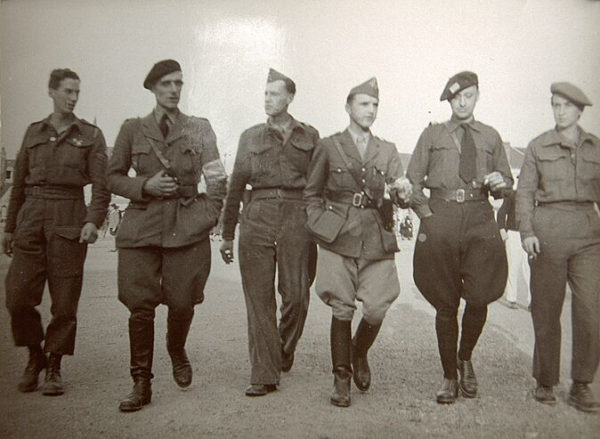
Tristan, you have picked five very smart and very brave women to highlight in your project. Please remember two things. First, these five were all part of the SOE F Section. There were many other women who participated as field agents in other sections of the SOE and risked their lives. Second, while we focus on France and the French Resistance, there were active resistance movements in the other occupied countries. Civilian women participated in these organizations, groups, or networks. And then, don’t forget the thousands of women who, while not formal résistants, resisted in any small way they could. This might have been offering their home to a downed airman, feeding the résistants or, as part of the reception group meeting an agent parachuting into France (these are just a couple of examples). I guess what I’m trying to say is to not lose perspective of the “big picture.” We’re fortunate to have the written accounts of many women agents. However, there are hundreds of thousands of stories which we’ll never know because after the war, brave women returned to their “normal” lives and never spoke of the war or their experiences.
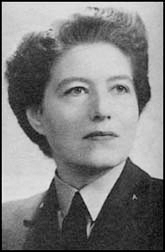
The surviving SOE agents (men and women) ⏤ typically as they grew older ⏤ considered their experiences during the war to be the most exciting time in their lives and something they were never able to duplicate during the remainder of their lives.
Was it unusual for women to participate in wars?
Actually, I don’t think it was unusual. However, let me clarify this. We can go back, at least to the Civil War, and see that women did have active roles in the wars that America was involved in. However, they were never involved on the front lines with respect to actual fighting or combat. Their roles were primarily limited to supportive positions such as administrative, nursing, ambulance drivers, and factory workers (think “Rosie the Riveter” during World War II ⏤ my grandmother was a “Rosie” in San Diego building wings for aircraft).
Probably the closest to actual combat action a woman might have had would have been as nurses assigned to the MASH units. One interesting area that women participated in during World War II was piloting aircraft between U.S. airfields or from the aircraft manufacturer to the plane’s assigned base in the states. I wrote about a Nashville woman who was accepted into this elite group of women pilots. The blog is called Killed in the Service of Her Country (read here). While the concept met with initial resistance, General Hap Arnold was all for it since it would free up qualified male pilots to take on active combat assignments overseas. After sustained lobbying, it was only recently that Congress passed a bill allowing these women veterans to be buried in Arlington National Cemetery.
Why did Hitler seek to dominate so many nations?
In theory, his quest to conquer the nations of Europe, Eastern Europe, and probably the world, was based on the idea of Lebensraum or, “living space.” Beginning in the late 19th-century, it was believed that for Germany to survive, it had to have more land to accommodate an increasing population. Hitler and the Nazi party embraced this idea and used it to justify their earliest invasions (e.g., the Annexation of the Sudetenland and the invasion of Poland). As time went on, I suppose world domination was too great to pass up, regardless of the original intent.
The general theory of Lebensraum was tied closely to Hitler’s racial theories and policies. His ideas about the Aryan race ensured certain ethnic and racial populations were designated as Untermenshen or, “sub-humans.” These were people considered inferior to the Germanic or Aryan race and as we saw, the Nazis believed they needed to be permanently eliminated.
What did Hitler have against the Jewish people?
It wasn’t just the Jewish people who Hitler and the Nazis despised. As I mentioned above, the Untermenschen included Roma (i.e., gypsies), the Slavs (i.e., Poles, Serbs and Russians), Free Masons, homosexuals, dark skinned people, and people with mental and physical handicaps. The Nazis believed these groups were not worthy of being kept alive. They began in 1933 with the handicapped people in Germany. The Germans had a formal plan to administer euthanasia to the undesirables which included the mentally ill. From there, they perfected a system of mass murder culminating in January 1942 when the Nazis approved the “Final Solution” which was their plan for the eventual extermination of the Jews.
I suppose Hitler and the Nazis hated the Jews much like anti-Semitics have over all the centuries. They essentially blamed the Jews for all the misfortune that befell Germany, especially after World War I. It is sad that people today continue to have similar feelings of hatred. If you go to Croatia today, you will see Nazi graffiti on many walls. Croatia was one of Germany’s strongest allies during World War II. In fact, the Croatian government set up extermination camps and dealt with the Jews and ethnic cleansing in ways that even the Nazis thought were barbaric. When Sandy and I visited Croatia, we were told that many of the grandparents who lived through the war were teaching their grandchildren to hate and adopt the Nazi philosophy. Remember, of all the human emotions, only hate can be taught.
Did people at the time realize the details of what Hitler was doing?
That’s a very good question. It is a question that is still being debated. They should have. A very good movie called Judgement at Nuremburg (link here) deals with that very issue. To be honest with you, I’m not sure I’m qualified to know the answer to that question. It’s sort of like asking whether a young French mother who lived with a German soldier during the Occupation was a collaborationist or, collabo. If that was the only way to feed her baby and keep the child alive, should this be considered a punishable crime? At the time, most French felt it was.
After the war, all German citizens said they had no idea or clue about the atrocities that Hitler and his henchmen unleashed. Personally, I find that hard to believe. General Eisenhower visited one of the liberated concentration camps. He was so appalled that he ordered every citizen in the nearby town to march through it and see what Hitler had done. Additionally, the Allies made sure that videos and still photos were taken because they knew that as time went by, there was a good chance that there would be people who would deny the existence of Nazi systematic genocide or, as we know it today, the Holocaust.
When Hitler came to power in 1933 and began to implement his racial policies starting with the boycott of Jewish businesses, how could German citizens not have known or at least surmised the outcome? I suspect no one at the time dreamed their leader would go down in history as the most prolific serial killer. I think many of them were required to read his book, Mein Kampf which outlined his perverse ideas especially towards the Jews and other undesirables. The 1935 Nuremberg Laws and Gypsy Laws should have woken everyone up, but his support continued to grow. Kristallnacht in 1938 did open some eyes but by then it was too late. If you view any newsreel (go to YouTube) from that time period, all you see are German citizens who appear fanatical about their Führer.
In France, the heavy deportations began in the summer of 1942. At the time, the French and Jews believed the Germans when told they were being sent to labor camps to work. It really wasn’t until late 1943 that the French knew the ultimate destination: the Auschwitz-Birkenau extermination camp. Some Jews knew before that but, unfortunately, they couldn’t convince the Jewish leaders in Paris.
The deportations did not include only Jews. Political prisoners, foreign spies, captured airmen, French citizens, and others were deported to camps such as Ravensbrück, Dachau, Natzweiler-Struthof, Auschwitz, and Buchenwald just to name a few. The captured SOE agents were placed under a program called Nacht und Nebel or, Night and Fog (read here). At the camps, they wore prison garments with the letters NN on the back. These prisoners were worked to death or executed. Their remains were cremated, and all trace of their existence was obliterated. In other words, Hitler wanted them to disappear without any evidence of ever existing. Violette Szabo would have been one of those prisoners.
How were the female spies influential in later years?
I don’t think they were influential ⏤ they weren’t allowed to be influential or given the opportunities. I think there were two factors. First, the women came back to a “man’s world.” Women at the time were housewives or if they worked, they were secretaries. Many of the survivors were given medals by the Allied governments and that was that. Also, you have to remember that like most wars, once it’s over, the participants just want to return to their normal lives and forget about what they just went through.
Second, within three years of the end of World War II, the Cold War was formally recognized, and the Allies were competing with the Soviets for many strategic assets. Women were not even on the radar screen at that point (nor were former Nazis or war criminals for that matter). Women who had proved themselves either in combat or as underground agents were not accepted or allowed to use their talents in the post-war world.
One thing I must caution you on is that we are sitting here seventy, eighty years after these events. It is very easy for us to apply today’s standards retroactively, but I think it is wrong to do so on a blanket basis. In other words, what we would not tolerate today in certain situations might have been accepted back then by both men and women. So, my point is that before judgement is rendered, the historian must put individual situations in the context of its time and determine how serious the afront was. I believe that not using the talents of these women hurt our country. Their contributions would likely have been meaningful to whatever goals were set in front of them.
There are two great examples of how women agents were treated after the war. Virginia Hall was considered the greatest spy during the French Occupation. After the war, she was the highest decorated civilian being awarded the Distinguished Service Cross (the only civilian woman awarded this medal during the war), the Order of the British Empire (MBE), and France’s Croix de Guerre. Despite joining the CIA after the war and working there for fifteen years, Hall experienced quite a bit of discrimination due to her gender. It was only in recent years that the CIA has recognized her contributions. The other example is Pearl Witherington, the leader of the SOE circuit called Wrestler. After the war, Pearl was awarded the Croix de Guerre and the Legion of Honor by General de Gaulle. The British high command recommended her for the Military Cross. However, she was a woman and denied the award. Instead, they gave her the MBE – Civil Division. Pearl refused to accept the award because as she stated, “There was nothing remotely ‘civil’ about what I did.”
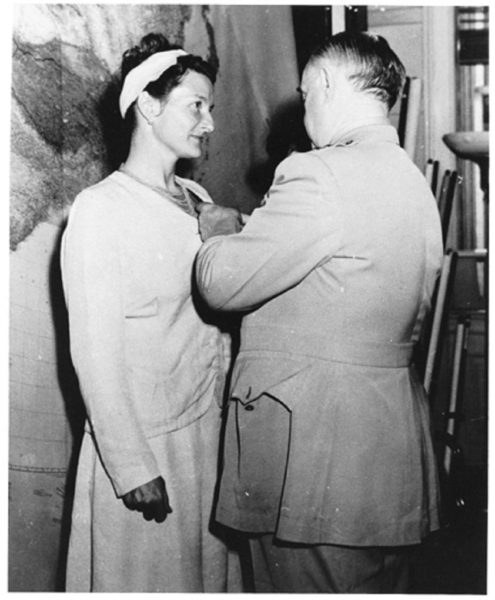
What impact did the female spies of World War II have on women’s gender roles?
Probably the greatest impact I can think of was in post-war France. General Charles de Gaulle became president of France in the Fourth Republic and he granted French women the right to vote. I believe this was a direct result of the roles women played in the liberation of France and specifically, their active involvement in the French Resistance.
A Real Life NHD Project Becomes History Itself
Thirteen days after D-Day, on 19 June 1944, Landing Ship Tank 523 went down off the coast of Normandy after hitting a mine just off Utah Beach. The men didn’t stand a chance as the ship sank in minutes. Aboard were two 19-year-old twin brothers from Creston, Nebraska: Julius and Ludwig “Louie” Pieper. Louie’s body was found, identified, and buried in the American Cemetery at Colleville-sur-Mer, France on the bluff overlooking Omaha Beach. Unfortunately, Julius became one of the tens of thousands listed as “missing in action.” However, his remains were finally discovered but could not be identified. The remains became known as “Unknown X-9352” and were buried in Belgium. Julius was MIA until 2015 when a Nebraska student participating in the NHD Contest and her research led the U.S. government to Julius’s Belgium grave. In November 2017, DNA tests confirmed the remains were those of the missing sailor. The twins had four siblings and the last survivor, sister MaryAnn Pieper Lawrence, was informed of the identification shortly before Thanksgiving. The family put a request in to have Julius buried next to his twin brother at the American Cemetery and the American Battle Monuments Commission granted their request. Read the NPR article here.
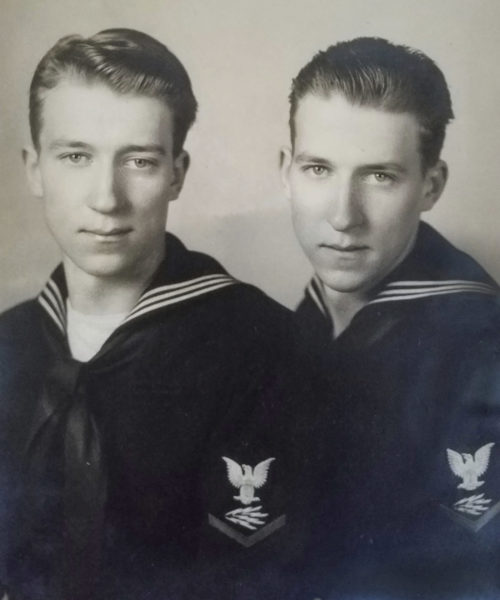
The brothers initially served in separate areas of the Navy. Their father wrote the Navy asking if they could serve together. One of the last letters the boys wrote to their parents said, “Do not worry about us. We are together.”
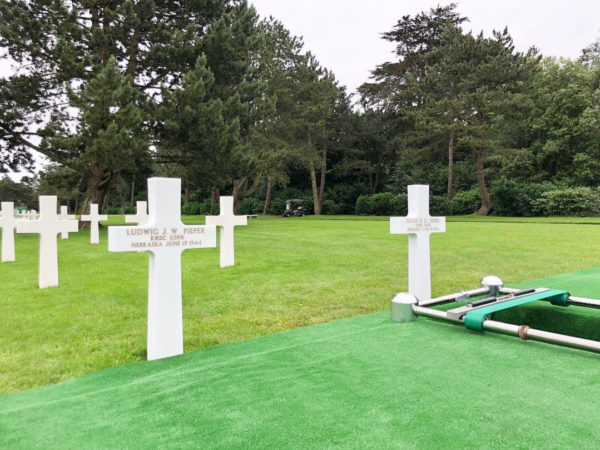
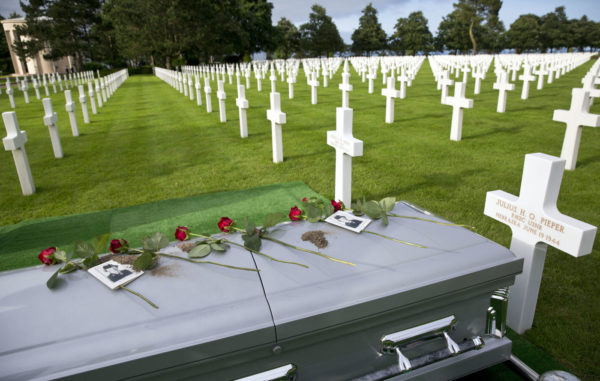
Thanks to the NHD, Vanessa Taylor, and Vanessa’s research project, the twins are finally together once again.
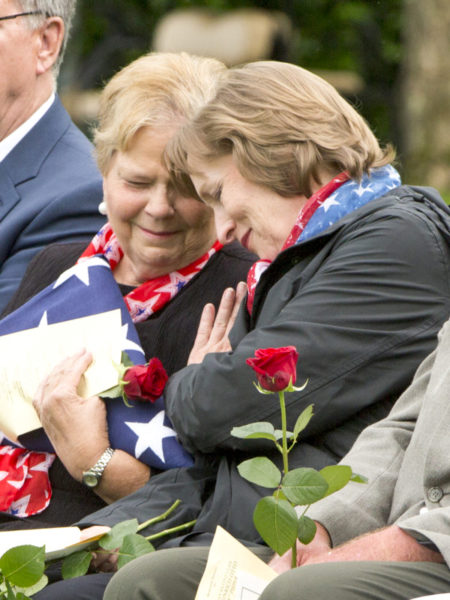
Good Luck to Tristan
I’d like to wish Tristan good luck with her project. I’ve asked her to keep me informed as to her progress and how her project/exhibit does in the contest. Obviously, I’ll keep all of you up to date.
It was nice to learn that our young students have the opportunity to participate and learn from an organization like NHD whose mission is to pass on an appreciation of history and at the same time help prepare them to think critically, increase their skills in problem-solving and research, and finally, provide a measure of self-esteem and confidence. Let’s hope one of the things the students learn is that history does repeat itself.
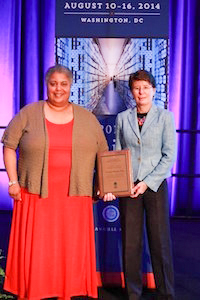
Our Next Blog and Cautionary Advice
In two weeks, we will publish our next blog entitled Sex Toy and Other Père Lachaise Neighbors. I have a feeling this blog might end up in someone’s “junk” file so, if you don’t receive it, please check your junk folder. We will visit some deceased individuals who led very interesting lives including a young woman named Sex Toy.
Status of Next Book: Where Did The Put The Gestapo Headquarters?
As I promised in our last blog, Messages in Handlebars, I will update you on the progress of my next book. I decided to dedicate two days a week to exclusively working on the next book, Where Did They Put the Gestapo Headquarters? We returned from our first trip of the year and I can say that I have diligently followed my goal ⏤ sort of like a New Year’s resolution I suppose.
As those of you who have read my previous four books know, I like to use “callouts” in each walk. These callouts are useful because I can give you a “side-bar” discussion on a topic of interest that may or may not have anything to do with the site you visit. I have finished all of the callouts for volume one. I’m now onto completing each individual walk. My library of images is immense and once finished with the first draft of the book, I will turn my attention to selecting the right images for each walk.
✭ ✭ Learn More About National History Day ✭ ✭
National History Day’s website: www.nhd.org
What’s New With Sandy and Stew?
I hope all of you enjoyed Ken Kirk’s blog from several weeks ago. Sandy and I are looking forward to possibly getting together with Ken and Claire in September when we travel to Paris. It’s a while off but time moves quickly.
Thank you to all of you who subscribe to our bi-weekly blogs. It seems there isn’t a day that goes by where we don’t increase our readership. Please let your history buff friends and family members know about our blogs.
Someone Is Commenting On Our Blogs
I’d like to thank Nicole C. for contacting me regarding our blog, The French Gestapo (read here). Nicole wanted me to know that she was born next door to 93, rue Lauriston which you may remember as being the headquarters of the infamous Bonny Lafont gang otherwise dubbed “The French Gestapo.” Her pregnant mother’s doctor was Jewish, and he referred her to the medical clinic next door. Mom later told Nicole about the traffic on the street with car doors opening and closing as well as a lot of shouting. I guess life and death lived next door to one another during the occupation. I hope Nicole will share some more stories with us.
If there is a topic you’d like to see a blog written about, please don’t hesitate to contact me. I love hearing from you so keep those comments coming.
Why Would You Want To Buy Our “Walks Through History” Books?
Simple.
You like to travel and experience history and historical events. You like to see original buildings that had a significant impact on the people and events of the history you’re engaged with. You want to know the stories behind the brick and mortar in front of you.
The walking tour books are meticulously researched so you can go directly to those sites and learn about the building’s history as well as an introduction to some of the more interesting people associated with it.
We Need Your Help
Please tell your friends about our blog site and encourage them to visit and subscribe. Sandy and I are trying to increase our audience and we need your help through your friends and social media followers.
Thank You
Sandy and I appreciate you visiting with us. We have some exciting things on the horizon and we’ll keep you updated as we go along.
Share This:
Follow Stew:
Find Stew’s books on Amazon and iBooks.
Please note that we do not and will not take compensation from individuals or companies mentioned or promoted in the blogs.
Walks Through History
Copyright ©2020 Stew Ross



NHD is one of the best events in which my children participated in their school career. They NHD completed projects 4th – 8th grades and learned many organizational and research skills that served them well in college and after in their careers. They always made it to state and one daughter actually placed first in the state of Texas which is huge. The experience at Nationals is one she still talks about today. Thanks for helping this student be the best she can be and what am amazing project she has. I hope she goes far in the competition. I remember the judges at Nationals really wanted to see that the project met the theme.
Hi Margaret. Thank you for letting us know about your first-hand experiences with NHD. Congratulations about the success your children had with NHD. The best reward is a life-long appreciation of history.
Thanks for being one of our subscribers. We appreciate your support.
STEW
Stew,
I follow your blogs with very keen interest as I mentioned to you before.
I read that you are coming over to Paris in September and would very much like to meet up with you when you are here.
I would also like if it is possible for you to give a combined talk to two groups that I am part of in Paris.
The groups are:
The Paris branch of The Royal British Legion. I am Vice chair of the branch, which is the original and oldest branch of the British Legion.
The other group is The Libre Resistance SOE section F in Paris which has members across France as well as in the UK. Tania Szabo daughter of Violette Szabo is one of our members.
Should you be willing to give a talk it is possible that I could arrange for the talk be given at the British Embassy in Paris, where we hold a number of Legion events and talks.
I await to hear back from you.
You can contact me at: richard.neave05@gmail.com
Best wishes,
Richard.
As always, thank you Richard for your kind words. We have put our trip to Paris on temporary hold because of the global virus situation. I will be in touch with you as events unfold. STEW